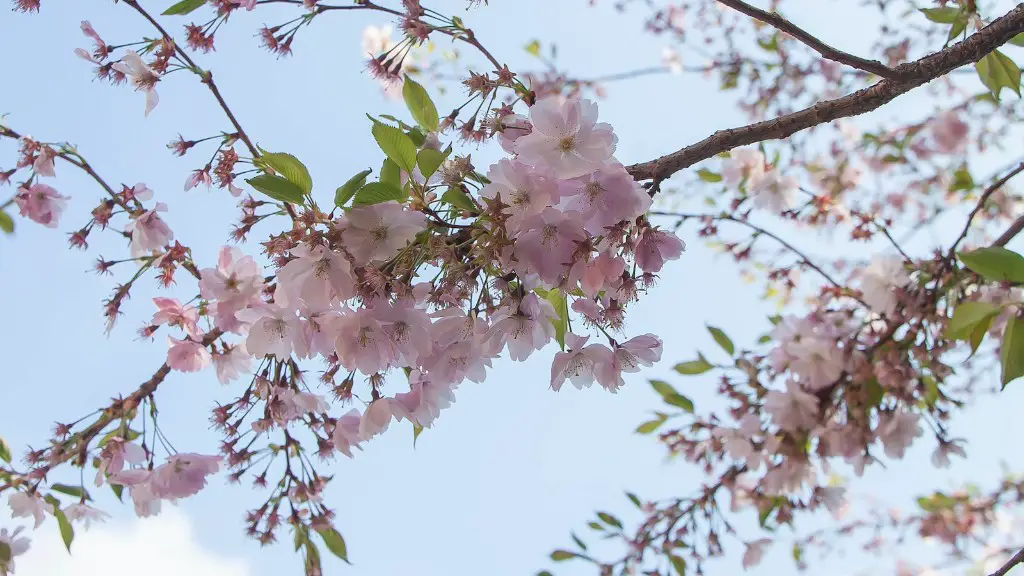Lemon trees are a beautiful and valuable addition to any garden. They bear sweet, juicy fruits that are used to add flavor to many dishes and drinks. In order to properly care for and enjoy your lemon tree, you must understand how to treat it. Here are some quick tips on how to treat a lemon tree.
To begin with, make sure the lemon tree is in a sunny spot. It needs at least six to eight hours of direct sunlight every day. If possible, try to place the lemon tree where it would get some shade in the afternoon, as this will help protect the tree from extreme temperatures.
Secondly, you should water your lemon tree consistently. Water it in the morning and evenings as needed, but not so much that the soil is soaked. The soil should remain moist but not wet for your lemon tree to flourish. Additionally, fertilize your lemon tree regularly with a slow-release fertilizer or a citrus one.
Thirdly, controlling pests and diseases is an important part of lemon tree care. Proper pruning of branches and leaves is essential for the tree’s health. Always use sharp and clean tools when pruning to prevent any wounds from staying open.
Fourthly, lemon trees also benefit from occasional trimming or shaping. This helps maintain their shape and size, which makes them even more attractive. In addition, it also helps encourage new growth, which is always beneficial.
Fifthly, check your lemon tree regularly for signs of any problems. Look out for signs of stress, such as wilting leaves, yellowing foliage, or any visible pests or diseases. If you notice any of these, act quickly to treat the problem to avoid any permanent damage.
Finally, be sure to mulch around the tree’s base. Doing so helps promote stronger and more vigorous growth while protecting the roots from extreme temperatures and other issues. Prior to mulching, make sure to remove any existing weeds or grass, as this can interfere with the tree’s nutrient uptake.
Pruning And Shaping
Pruning and shaping your lemon tree properly is important for its care and growth. Pruning helps protect the tree from pests and diseases and maintain its shape and size. As with any other tree, it is important to use sharp and clean tools to prevent any wounds. When trimming or shaping, always consider the size and shape of the tree, as well as the amount of shade it needs.
It is important to know and understand when and what to prune. Pruning should be done on a regular basis, and it is important to take out any dead or diseased branches. This helps to maintain the tree’s overall health, encourage new growth, and keep a good shape.
Pruning not only helps maintain the size and shape of a lemon tree, but it encourages new growth and opens up more light to the canopy. This helps the tree to produce more flowers and fruits. Additionally, pruning helps remove excess foliage, which can interfere with the air movement and water absorption.
In addition to regular pruning, shaping helps keep the lemon tree in an attractive shape and size. You can use various techniques to shape and prune the tree, such as crown lifting or reducing the size of the canopy.
It is important to practice proper pruning and shaping techniques so that the tree is not damaged or subjected to any shock. If done correctly, pruning and shaping will help the tree remain healthy and attractive for years to come.
Protecting Lemons From Disease And Pests
It is important to protect your lemon tree from diseases and pests in order to keep it healthy. Doing so helps ensure a good harvest of juicy lemons each season. Since disease and pests can damage the tree’s structure and compromise its health, it is important to take preventative measures.
The most common diseases lemon trees can suffer from are canker, foot rot, and gummosis. It is important to be on the lookout for these diseases and to act quickly if any symptoms are detected. Additionally, it is important to fertilize regularly and water the tree properly to prevent nutrient deficiencies and make it less susceptible to disease.
When it comes to pests, the most common are aphids, scale, and whiteflies. It is important to identify these pests and take the proper steps to eradicate them. This can be done through manual removal, using natural solutions such as neem oil, or using chemical insecticides. Additionally, you should also keep an eye out for any signs of infestation, such as abnormal leaf discoloration or pests congregating around tree trunks and branches.
In addition to the above, you can also use some preventative measures to protect your lemon tree from diseases and pests. This includes keeping the area clean of debris and rubbish, keeping the tree watered properly and fertilized, and removing any weak or dying branches. Additionally, you can also keep a lookout for any signs of disease or pest activity to detect and treat them early.
Using Mulch to Protect the Lemon Tree’s Base
Mulch is a great way to protect your lemon tree’s roots from extreme temperatures and other issues. In addition to insulating the roots from any damage, mulch also helps retain soil moisture, keeps weeds away, and discourages any disease or pest activity.
To use mulch, first, make sure to remove any existing weeds of grass and debris around the tree’s base. This can interfere with the tree’s nutrient uptake and encourage disease or pest activity. Once the tree has been cleared of debris, you can spread a layer of mulch around the base. Do not heap the mulch around the trunk, as this can invite pests and disease. Additionally, always use a slow-release fertilizer when mulching to help the tree absorb the necessary nutrients.
When it comes to mulching material, you can use anything from compost to grass clippings. Alternatively, organic material such as coconut coir, bark, or sawdust are also good options. Make sure to check the expiration date on any material you use, as some materials may be contaminated or contain chemicals.
You should also check the mulch levels around your lemon tree regularly. Too much mulch can cause the roots to rot, so make sure to keep the levels in check. Additionally, if the mulch becomes dry and begins to break down, add a thin layer of fresh mulch to keep the soil moist and healthy.
Good Practices to Keep Your Lemon Tree Healthy
Growing a lemon tree is a great way to enjoy sweet and juicy fruits, and it can be a rewarding experience. When it comes to keeping your tree in tip-top condition, there are certain practices that should be followed to ensure healthy growth and a good harvest. Here are a few practices to ensure a healthy lemon tree.
First of all, it is important to keep your lemon tree watered regularly. Lemon trees like moist soil, so water it in the morning before the sun rises. Additionally, use a slow-release fertilizer or a citrus fertilizer to keep the tree well-nourished.
Second, it is important to keep an eye out for any signs of diseases or pests. Look out for wilting leaves, yellow foliage, abnormal discoloration, or any presence of pests or diseases. If you notice any of these issues, act quickly to treat the problem before it becomes too severe.
Third, regular pruning is essential for healthy lemon trees. Prune the tree to keep its shape and size, and remove any dead or diseased branches. This helps to maintain the tree’s overall health, encourage new growth, and keep a good shape. Additionally, pruning helps remove excess foliage, which can interfere with the air movement and water absorption.
Finally, mulching around the tree’s base helps promote stronger and more vigorous growth while protecting the roots from extreme temperatures and other issues. Prior to mulching, make sure to remove any existing weeds or grass, as this can interfere with the tree’s nutrient uptake.
By following these tips and practices, you can rest assured that your lemon tree will remain healthy and strong for years to come. With the right amount of care and attention, your lemon tree can provide you with juicy and sweet fruits each season.




